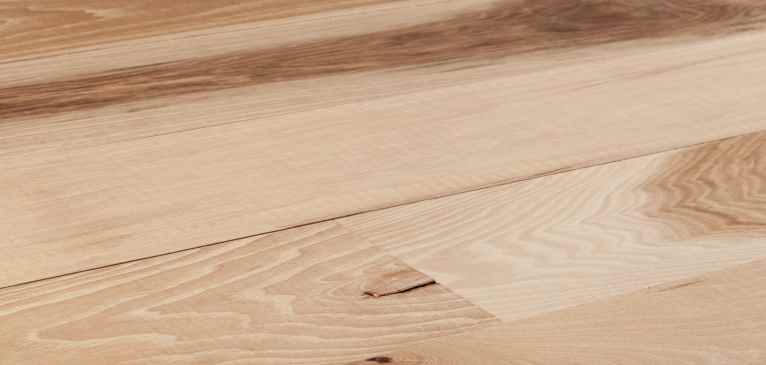Imagine this: you’ve just finished a DIY project, and your beautiful unfinished wood floors are marred by stubborn paint splatters, grime, and dust. You’ve tried soap and water, but the stains remain. You’re frustrated and ready to throw in the towel. But wait! There’s a simple, effective solution: mineral spirits. This powerful cleaning agent can work wonders on unfinished wood, removing even the most tenacious stains and leaving your floors looking their best.

Image: sayenscrochet.com
Mineral spirits, also known as white spirits or petroleum spirits, are a solvent derived from petroleum. They have a strong solvent power, making them ideal for cleaning and degreasing various materials, including wood. This article will dive deep into the art of cleaning unfinished wood floors with mineral spirits, providing you with a comprehensive guide that will empower you to confidently tackle any cleaning challenge.
Understanding Unfinished Wood Floors
Unfinished wood floors, unlike their finished counterparts, lack a protective coating like varnish or polyurethane. This makes them more susceptible to staining and damage but also offers unique benefits. The raw wood allows for a natural, rustic look and feel, and it can be easily refinished or stained to match your desired aesthetic. Understanding the properties of unfinished wood is crucial before embarking on any cleaning adventures.
The Power of Mineral Spirits
Mineral spirits are a highly effective solvent for removing grease, oil, paint, and other stubborn residues. They work by dissolving the unwanted substances, making them easily removable with a cloth or sponge. However, they are flammable and should be handled with care, always working in a well-ventilated area, away from open flames.
Preparing for the Cleaning Process
Before you dive into cleaning your unfinished wood floors, there are a few essential steps to ensure a safe and successful experience:
- Clear the area: Move any furniture or objects out of the way to provide ample working space.
- Protect yourself: Wear protective gloves to prevent skin irritation. Eye protection is also recommended.
- Ventilate the room: Open windows and doors to ensure proper ventilation. Mineral spirits release fumes, so it’s important to work in a well-ventilated environment.
- Gather your materials: You’ll need mineral spirits, clean cloths, a soft-bristled brush, and a bucket of clean water.

Image: www.vacuumjudge.com
The Cleaning Process: Step by Step
Now that you’re ready, let’s get into the cleaning process:
- Test the area: Apply a small amount of mineral spirits to an inconspicuous area of your floor to check for any color changes or reactions.
- Pre-cleaning: Using a soft-bristled brush, remove any loose dirt or debris from the floor.
- Apply mineral spirits: Dampen a clean cloth with mineral spirits. Avoid soaking the cloth, as this could lead to excessive wood saturation.
- Rub gently: Gently rub the cloth in a circular motion over the stained or dirty areas. Don’t scrub too hard as this can damage the wood.
- Remove residue: After cleaning, use a clean damp cloth to remove the mineral spirits and any remaining residue.
- Dry thoroughly: Allow the floor to dry completely before applying any additional products.
Expert Tips and Tricks
Here are some helpful tips from experienced wood floor cleaners:
- Dilute for sensitive areas: For delicate areas or highly porous woods, consider diluting the mineral spirits with a bit of water.
- Pre-treat difficult stains: For tough stains like paint splatters, apply a little extra mineral spirits and let it sit for a few minutes before rubbing.
- Avoid soaking the wood: Excess mineral spirits can damage the wood, so always work in small sections and remove any excess immediately.
- Follow up with a sealant: Once the floor is clean and dry, consider applying a wood sealant to protect it from future stains and scratches.
Common Mistakes to Avoid
Even with the best of intentions, there are a few common mistakes to watch out for when cleaning unfinished wood floors with mineral spirits:
- Over-saturation: Excessive mineral spirits can damage the wood fibers, causing warping or discoloration. Always use a sparingly damp cloth.
- Leaving residue: Make sure to remove all traces of mineral spirits after cleaning to prevent a sticky residue that can attract dust and dirt.
- Not ventilating properly: Mineral spirits fumes can be harmful, so always work in a well-ventilated area and wear a respirator if necessary.
Alternative Cleaning Solutions
While mineral spirits are an effective cleaner, they may not be suitable for everyone. Here are some alternative cleaning solutions for unfinished wood floors:
- Mild soap and water: For light dirt and grime, a mild soap and water solution can be effective.
- White vinegar and water: White vinegar is a natural cleaner and disinfectant that can also help remove mild stains.
- Wood cleaner: There are numerous commercial wood cleaners available that are specifically designed for cleaning unfinished wood floors.
Safety First: Handling Mineral Spirits Responsibly
Remember, mineral spirits are a powerful solvent and require proper precaution. Always work in a well-ventilated area, wear protective gloves and eye protection, and keep mineral spirits away from any open flames. Additionally, never store mineral spirits in sealed containers, as they can release flammable vapors.
Cleaning Unfinished Wood Floors With Mineral Spirits
Concluding Thoughts
Cleaning unfinished wood floors with mineral spirits is a simple and effective way to restore their beauty. By carefully following the steps outlined above and heeding safety precautions, you can confidently tackle any cleaning challenge and achieve a stunning, lustrous finish. So, the next time you find yourself confronted with stubborn stains or grime on your unfinished wood floors, remember the power of mineral spirits. Your floors will thank you.






